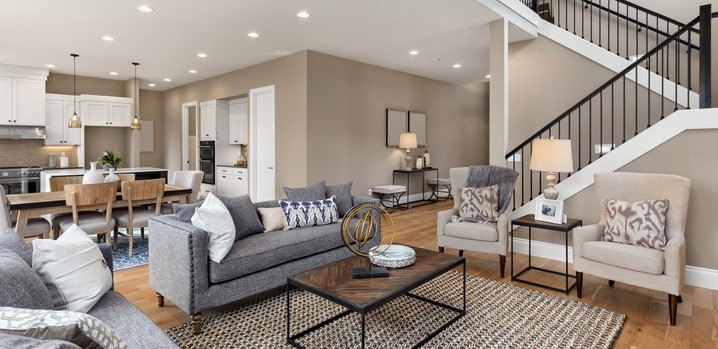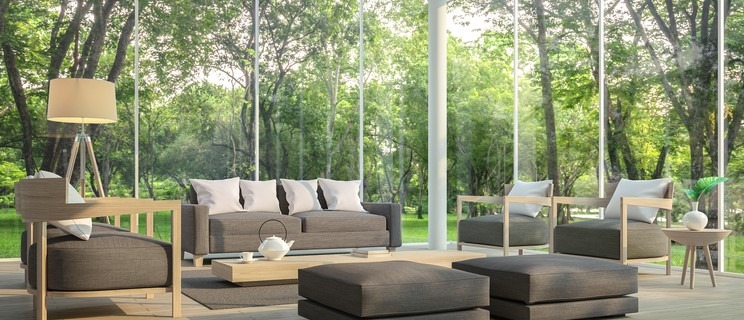Anxiety is an impenetrable emotion that is very difficult to deal with. It’s a distressing feeling of worry, nervousness, and apprehension, and every one in five individuals lives with common anxiety issues.
Living with anxiety can be a struggle, and sometimes, the most minor things and thoughts can leave you in a downward spiral. While mental health problems need to be addressed and talked about more openly, some small things can help to an extent. One way is to make your home, which is your safe place, a serene and soothing environment.
Here are a few adjustments that can brighten up your house and lift your spirits on a dreary day:
Declutter.
A cluttered home offers no peace of mind for the residents in it. A clean, minimalistic décor devoid of clutter can be soothing for the senses. Too much clutter can cause more distraction and may worsen symptoms of anxiety. Dedicate some time to get rid of the clutter in your home and sort out the belongings you haven’t used for a while. Make sure you free your entryway and keep the front door free of blockage. Keep your bookshelves half-empty and add some of your own knick-knacks to add personality.
Choose the proper colors and tones.
Particular colors can evoke different moods in people, and each person reacts differently to particular colors. Whether it’s the color of your walls or your bedspread, neutral tones can be more calming than bold and dark shades. Here are some colors you might want to consider:
- Tan to brown – These neutral colors are soothing and very grounded. It works well for bringing attention to other colors in the room, and they are also relaxing and warm.
- White – White is great for making spaces feel airy and spacious. However, you must avoid using the same shades of white over and over, as too much of it will make it look dull. Accent your white walls with beige, cream, off-white, ivory, eggshell, vanilla, and more.
- Blue – When it comes to relaxing and anxiety-reducing interior decorating, the color blue is at the center stage. It’s a soothing color that can help ease a busy mind. But make sure to keep the hues soft and neutral, like powder blue, sky blue, grayish-blue, navy, etc. On the other hand, the vibrant blues are stimulating.
- Green – Green can be soothing and comforting, as it is the color associated with nature. For this reason, it brings a sense of peace and calmness. To keep it soothing, choose green hues that are not strong and vibrant, like light green, mint green, light sage green, and more. The wrong green paint can be too overwhelming. To keep it looking grounded and soothed, pair it with earthy tones.
Also, you can opt for wooden flooring, oak-stained veneers, and furnishing in muted tones. Adding some texture made from natural materials can also help. Suede and velvet as upholstery can give off a soft feel and a touch of elegance.
However, this doesn’t mean that you should give up on your favorite colors if they are vibrant – just be mindful of where to put them. You can consider having them as accent pieces. The colors in your home must make you feel good. For people suffering from depression, it’s advisable to decorate the room with at least 20% of their favorite colors. Adding some vibrant colors for variety would be better than using the same monochromatic tones over and over again.
Install proper lighting.
Light can amplify feelings, both negative and positive. When installing lighting fixtures to your home, choose warm and mellow lights for their calming effects. Don’t let the light fall directly to your eyes, and install an anti-glare filter for your ceiling light fixture. Dim lights can also do wonders to make your home feel inviting and cozy. You can also add some lamps, candles, or some strings of fairy lights to create a soothing aura.
Welcome natural light.
Research indicates that hospital patients exposed to natural light experience less pain and stress. If they feel the positive effects of natural sunlight, then surely you can too. Natural light can brighten up a person’s mood by increasing the production of endorphins and serotonin in the body. Natural light also helps decrease the sense of suffocation during a panic episode, and large window panes can decrease the feeling of claustrophobia.
Have large, open spaces that allow good ventilation, and let natural light help reduce anxiety symptoms. If you live in a compact apartment that you can’t renovate to add more windows, choose an open plan layout that has fewer barrier walls to make the space look bigger. You may also want to add mirrors in more strategic areas for a similar effect.
Bring indoor plants inside.
Much like they do outside, indoor plants can give massive health benefits. Not only do they purify the air by removing toxins and increasing oxygen levels, but just looking at them can also be calming and therapeutic. Nurturing houseplants or maintaining a small kitchen garden can become a good, stress-busting hobby.
Research has found that having plants indoors can reduce fatigue, lower anxiety, and boost positive levels of your mood. It creates a comfortable ambiance that con boosts productivity and feelings of elatedness.
Try placing plants strategically in your bedroom, living room, and passageway. Or, you can create a vertical garden by hanging plants in interesting pots from the ceiling or walls.
Decorate with relaxing wall décor.
If for whatever reason, you can’t bring in indoor plants, you can always go the alternate route and surround your home with photos and scenic views like bodies of water, plants, trees, and even mountain peaks. Do this by investing in landscape paintings or framed photographs and hanging them on your wall.
When choosing art to display in your home, keep these tips in mind:
- Consider the size of your room when choosing wall art. A too-little frame on a big, spacious wall won’t be proportional.
- Large and oversized wall art can serve as a great focal point for any room.
- Keep wall décor at eye level so as not to strain the neck of any observer. Visually connect the wall art with the rest of the space.
- If you have small-sized photo frames and wall art you want to display, consider creating a gallery wall to showcase all of them in one place.
Add soothing elements.
Besides wall décor, which is nice to look at, another way to curb anxiety is by placing things that can soothe your senses. For example, adding a wind chime that makes sounds when there’s wind can help trigger calming thoughts. Essential oils and scented candles can also help reduce stress. Use organizers for your home office desk to keep it clutter-free and keep your mind more relaxed.




